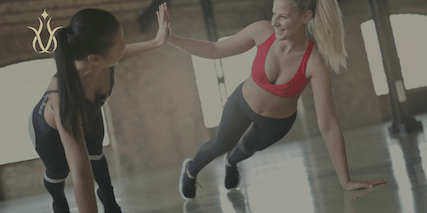Overcoming the challenges of yoga takes more than just physical flexibility; it requires persistence, patience, and the right approach. If you’re struggling, you’re not alone. This article dives into practical ways to tackle common obstacles in your practice—from sticky plateaus to complex poses—without overwhelming you with too much detail. Prepare to unlock a smoother and more rewarding yoga experience.
Key Takeaways
-
Connect with your yoga practice: embrace the journey’s challenges as stepping stones, breakthrough physical plateaus with variety, and gain mental and emotional resilience.
-
Overcome pose-specific difficulties: find balance in Tree Pose, master alignment in Triangle Pose, and build foundational strength for advanced asanas.
-
Integrate yoga into daily life: create a serene home practice space, balance yoga with your schedule, and explore flexible online class options to maintain consistency.
Embracing the Journey: Understanding The Challenges of Yoga
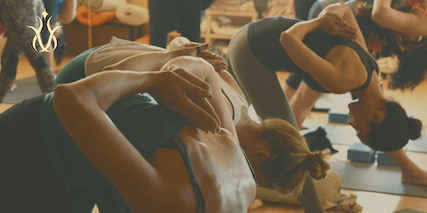
The path to mastering yoga is etched with many challenges, each one an opportunity to stretch not just our bodies but our inner fortitude as well. When we begin, our focus is often singular: to nail that challenging pose or to flow through a sequence with grace. But as we explore deeper, we uncover layers of complexity within ourselves and our practice.
A powerful Crow Pose may test our boundaries, yet the resilience we build and the tension we release ultimately enhance our well-being and demonstrate our true strength. Welcoming yoga’s challenges invites growth, transforming stumbling blocks into stepping stones on our journey of transformation.
The Physical Plateau
Reaching a physical plateau can feel like being stuck in a rut – your progress in mastering poses or increasing flexibility seems to have come to a halt. It’s natural to encounter periods where the body resists further advancement. Nonetheless, consider these plateaus as opportunities to invigorate your routine. Introducing variety to your routine, experimenting with new yoga styles, or augmenting your practice with targeted strength and flexibility training can reignite progress.
Maintaining regular practice and introspective reflection identifies areas for improvement, turning perceived stagnation into fertile soil for profound learning and development.
Mental Roadblocks in Yoga
The mental component of yoga is as significant as the physical. Staying mentally present and focused, especially in basic poses like the Tree Pose, ensures our mind and body move in harmony, preventing us from toppling over – both literally and figuratively. Our intuition can be a guide, letting us know when to push our limits and when to embrace a restorative pace. This holistic engagement reduces stress, mitigates anxiety, and promotes a heightened state of relaxation and mental well-being.
Adjusting our physical effort paves the way for a more profound and energized practice, fostering mental spaciousness and clarity.
Emotional Release and Vulnerability
Our yoga practice can sometimes coax unexpected emotional responses to the surface. The frustration of not achieving a peak pose or the defeat in a moment of imbalance can evoke feelings of vulnerability. It is by navigating these emotional waters – acknowledging and embracing these feelings – that we find a path to personal growth and a deeper connection to our practice.
Emotional release, a potent yet frequently neglected facet of yoga, guides us towards heightened self-awareness and resilience.
Navigating Common Yoga Pose Difficulties
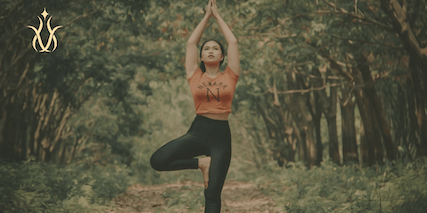
As we journey through our yoga practice, we encounter poses that challenge our strength, flexibility, and balance. Some of these poses include:
-
Gate Pose
-
King Pigeon
-
Half Moon
-
Warrior I
-
Scale Pose
These poses demand a strong foundation and concentrated effort. They require a mix of foundational strength, core engagement, and steady breathing, serving as reminders of yoga’s intricate dance between power and poise.
Even for advanced practitioners, poses such as the Scale Pose can be intimidating, and the Fish Pose exemplifies the balance between strength and flexibility required to hold yoga poses.
Achieving Balance in Tree Pose
The Tree Pose, a symbol of balance and stability in yoga, beckons us to find our centre of gravity. For those who wobble and sway, anchoring the foot firmly against the inner thigh of the standing leg and aligning the palms at the heart or overhead can create the steadiness we seek.
Beginners can also lean on a wall for support, gradually learning to find their balance before confidently moving to the room’s centre.
Mastering Alignment in Triangle Pose
Triangle Pose is a confluence of flexibility, strength, and awareness. It stretches the sides of our body and challenges our balance, but it’s also accessible to all levels. Attaining ideal alignment might necessitate the use of tutorial videos or self-recording for self-evaluation and posture adjustment.
Just like any pose, awareness is crucial in mastering the Triangle Pose.
Building Strength for Challenging Poses
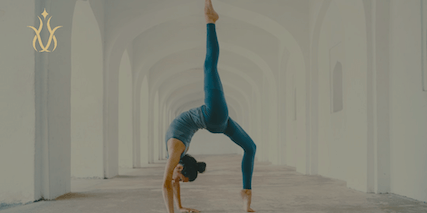
Developing the required strength for demanding yoga poses is its own journey. A balanced combination of strength, flexibility, focus, and balance is needed to perform poses like the Wheel Pose. The Chair Pose, for example, not only strengthens and stabilizes but also stretches the muscles of the back, shoulders, and chest, aiding balance and coordination for more advanced poses.
Meanwhile, the Crow Pose hinges on a strong core and even weight distribution, underscoring the importance of building foundational strength and proper technique.
Strategies for Yoga Teachers Facing Classroom Challenges
Many yoga teachers who craft the classroom experience frequently encounter unique challenges. It’s not just about guiding students through asanas; it’s also about building confidence, fostering a sense of community, and keeping classes engaging for both themselves and other yoga teachers. As a yoga teacher, one must be prepared to face these challenges head-on as a yoga instructor.
Tackling imposter syndrome feelings is integral to growth, and considering each class as a chance to improve teaching skills boosts confidence and proficiency.
Cultivating Confidence Amidst Self-Doubt
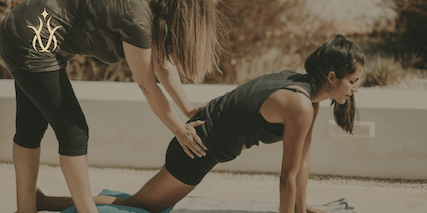
Even the most seasoned yoga teachers can be haunted by self-doubt. Battling the Imposter Syndrome involves recognizing the value of personal and professional growth, seeking knowledge, and increasing the frequency of teaching for confidence building.
Embracing one’s unique teaching style and remaining committed to learning foster an authentic teaching presence, enhancing one’s confidence over time. Acknowledging that teaching proficiency comes with experience can help instructors manage self-doubt and leverage their growing expertise.
Retaining Students and Building Community
Establishing a warm environment and diverse, accessible classes is crucial in encouraging regular participation and community among yoga students. Personalizing the yoga experience by engaging with students, remembering their names, and teaching authentically creates a memorable and inviting atmosphere that encourages loyalty. Moreover, regardless of class size, a teacher’s enthusiasm and dedication ensures a positive and inclusive experience for all attendees.
Establishing a niche or teaching distinct styles enables yoga teachers to cultivate robust communities that reach beyond the yoga mat.
Innovative Teaching Techniques for Engagement
To maintain student engagement, yoga instructors can thread thematic links among movements, breath, and yoga philosophy. Teachers can cater to different learning styles by varying instructional cues, ensuring that everyone in the class, whether auditory, visual, or kinesthetic learners, benefits from the practice.
Introducing pose variations and modifications keeps the practice fresh and accommodating to individual needs, helping to maintain student interest and prevent monotony.
Integrating Yoga Practice into Daily Life
Yoga transcends the mat, permeating the rhythm of daily life. It offers a way to maintain focus, balance, and stress management amid our daily routines. By integrating yoga principles into everyday life, we can support our journey towards not only better physical health but also mental well-being and the adoption of other healthy lifestyle habits.
Whether through dedicated spaces, mindful breathing, or Sun Salutations to start the day, yoga can become a seamless part of our lives.
Creating a Home Yoga Space
Creating a tranquil home space for yoga practice fosters focus and relaxation, promoting a regular routine. A tranquil home space for yoga practice can include:
-
A quiet corner decked with plants, soothing decorations, and natural light
-
Props such as books and scarves that can serve as blocks and straps
-
Specialized yoga props, as your practice evolves
Creating this atmosphere can inspire daily practice and enhance your yoga experience.
A home yoga space is more than just a physical area; it serves as a mental sanctuary, much like yoga retreats and a yoga studio.
Balancing Yoga with Work and Responsibilities
To incorporate yoga into a busy lifestyle, mindful time management and prioritization are needed to make it an indispensable part of the day. Establishing a routine with a specific time for yoga can help solidify the habit.
For those unable to carve out a dedicated time slot, incorporating yoga into short breaks, such as practising Chair Yoga at work, can help maintain regular practice without overwhelming your schedule.
Online Yoga Classes: A Flexible Option
Online yoga classes have transformed our yoga practice, providing unmatched flexibility and ease of access. They allow us to fit yoga into our schedules, regardless of our time constraints or location, ensuring that we never have to miss a class due to other commitments.
Online platforms and YouTube channels provide a wealth of high-quality yoga resources that can be accessed at little to no cost.
Overcoming External Obstacles in Your Yoga Journey
Despite our best intentions, external elements can hinder our journey towards consistent yoga practice. These external challenges can feel like significant hurdles, whether it’s a lack of suitable space or the right mat. Investing in quality yoga tools can enhance practice, while distractions like noise or interruptions can detract from our focus and the effectiveness of our sessions.
Sometimes, adaptations, like finding a suitable yoga class that aligns with personal goals or adjusting to seasonal changes, are needed to maintain our practice’s momentum.
Dealing with Distractions and Interruptions
Maintaining focus during yoga practice is crucial, and an environment devoid of distractions is fundamental to a satisfying session. To minimize interruptions at home, it is vital to set boundaries and remove disruptors such as mobile phones or pets before commencing your practice.
Managing Injuries and Physical Limitations
Returning to yoga after an injury should be approached with caution and professional advice to ensure safe and adapted practice. Discomfort or pain during poses like the half-moon requires us to listen to our bodies and seek guidance.
Adapting a yoga routine to suit physical limitations is crucial to avoid additional injury and facilitate the healing process.
Financial Considerations for Regular Practice
Managing the financial aspects of maintaining a yoga practice need not be a barrier. Here are some ways to make it more affordable:
-
Virtual classes offer an affordable and community-rich alternative.
-
Community or donation-based sessions provide cost-effective ways to practice regularly.
-
Local events and festivals often feature free or low-cost yoga classes.
-
New instructors may offer affordable private lessons as they gain experience.
-
Work/trade programs in studios can help reduce financial burdens.
-
Avoiding pricey gear can also help save money.
The Psychological Aspects of Yoga Challenges
The psychological path of yoga is as important as the physical one. Regular yoga can boost mood-enhancing brain chemicals, contributing to a happier state of mind.
This section will explore the mental and emotional challenges frequently encountered in yoga practice, providing insights on gracefully and resiliently navigating these obstacles.
Stress and Anxiety as Impediments
Stress and anxiety can be significant barriers to yoga. They create tension and disrupt the state of relaxation that yoga seeks to cultivate. The fight-or-flight response initiated by stress can counteract yoga’s calming effects, impeding the ability to relax and focus during practice.
Yoga fosters a transition from sympathetic nervous system activation to a state of parasympathetic relaxation, assisting in surmounting these barriers.
The Role of Patience and Perseverance
Patience and perseverance are cornerstones of the yoga practice. Overcoming challenges in yoga often requires a gradual approach and a steadfast spirit. Patience cultivates a serene mind and becomes crucial when tackling life’s obstacles and advancing in yoga. It is particularly important during injury recovery, where time and attentive self-care are necessary for healing.
When faced with plateaus, it is patience and perseverance that leads to new growth and breakthroughs.
Celebrating Progress, Not Perfection
In the pursuit of yoga, the true reward is the journey, not the destination. Celebrating each milestone, no matter how small, fuels our motivation and fosters a sense of accomplishment. Remembering to uphold a positive mindset and recognize our victories can drive us forward more effectively than dwelling on imperfections.
The joy found in progress is a powerful motivator, and it is this cheerful disposition that can lead to greater strides in our practice than any focus on achieving perfection.
Summary
Practicing yoga can present several challenges, including physical, psychological, and logistical barriers. Physically, individuals may experience adverse events such as musculoskeletal injuries, nervous system issues, and eye conditions, particularly when engaging in more extreme practices like headstands or forceful breathing without proper guidance.
It is recommended that beginners avoid such extreme practices and that individuals with medical preconditions work with their physician and a qualified yoga instructor to adapt postures appropriately.
Psychologically, some individuals may face barriers such as lack of motivation, perceived stress, and difficulty in maintaining a sustained commitment to the practice.
Logistically, challenges include time constraints, competing interests, and the cost associated with yoga classes, which can be a significant barrier, especially in low-income populations.
To mitigate these challenges, it is important to provide accessible, low-cost yoga options and to ensure that yoga instructors are well-trained to adapt practices for individuals with varying abilities and health conditions. Additionally, promoting awareness of the benefits of yoga and providing social support can help sustain engagement in the practice.
Frequently Asked Questions
How can I overcome a plateau in my yoga practice?
To overcome a plateau in your yoga practice, try introducing variety by exploring new yoga styles, incorporating strength and flexibility training, and changing your routine. Consistency and self-reflection will also help you monitor your progress and identify areas needing attention.
What can I do to stay focused during my yoga practice at home?
Create a distraction-free environment by removing potential disruptors like mobile phones and pets and establishing a dedicated, clean, and inviting space to help you enter a state of relaxation and concentration. This will enhance your focus during your at-home yoga practice.
How can I balance yoga with my busy work schedule?
You can balance yoga with your busy work schedule by establishing a specific routine for your practice and integrating yoga into your day, even with shorter sessions or online classes. Prioritizing your well-being through small, consistent efforts will help you maintain a balanced lifestyle.
Are there affordable options for practising yoga regularly?
Absolutely, you can practice yoga regularly at affordable rates by attending virtual classes, community or donation-based sessions, free local events, participating in work/trade programs at yoga studios, or choosing instructors with affordable rates. These options allow you to make yoga a regular part of your routine without breaking the bank.
What is the importance of patience in yoga?
Patience is crucial in yoga as it fosters a calm mind and is pivotal in overcoming life’s obstacles, especially during injury recovery and when progress seems slow. Embracing patience allows for gradual improvement and personal development.
Disclaimer: This article is for informational purposes only and should not replace professional medical advice. If you have specific concerns or medical conditions, it is recommended to consult with a healthcare professional for personalised guidance and support.
Resources
Adverse Events Associated With Yoga: A Systematic Review of Published Case Reports and Case Series.
Cramer H, Krucoff C, Dobos G.
PloS One. 2013;8(10):e75515.
Dai CL, Chen CC, Sharma M.
International Journal of Environmental Research and Public Health. 2023;20(14):6395.
If We Offer, Will They Come: Perceptions of Yoga Among Hispanics.
Thind H, Garcia A, Velez M, Tucker KL.
Complementary Therapies in Medicine. 2021;56:102622.
The Best Yoga Retreats in the World for a Life-Changing Experience

